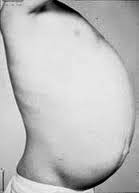Deficient Fluid Volume related to Diarrhea
Nursing Care Plan for Diarrhea Nursing Diagnosis : Deficient Fluid Volume related to input decreases, loss of active fluid volume, failure in the regulatory mechanism Defining Characteristics: Weakness Thirsty Decreased skin turgor Mucous membrane / dry skin Pulse increases, blood pressure decreases, pulse pressure decreases Decreased capillary filling Change in mental status Decreased urine output Increased urine concentration Increased body temperature Hematocrit increases Sudden weight loss. Goal After implementation, fluid and electrolyte requirements are adequate, with the following criteria: Hydration Adequate skin hydration Blood pressure is within normal limits The pulse is palpable Moist mucous membrane Normal skin turgor Stable weight and within normal limits Eyelid - not concave Fontanela - not concave Normal urine output No fever There is no very thirst There is no short breaths Fluid Balance Normal blood pressure Palpable peripheral pulse There is no orthostatic hypotensi...
